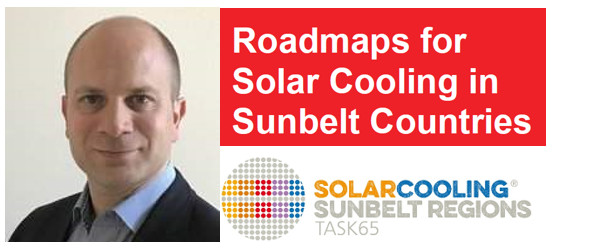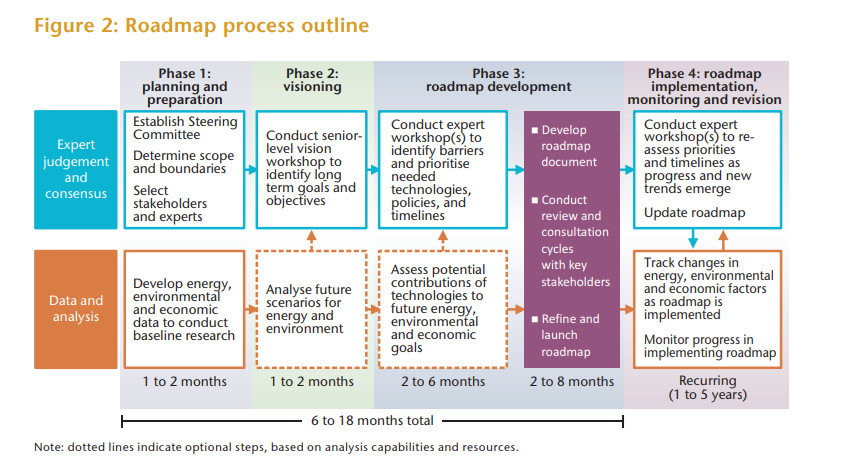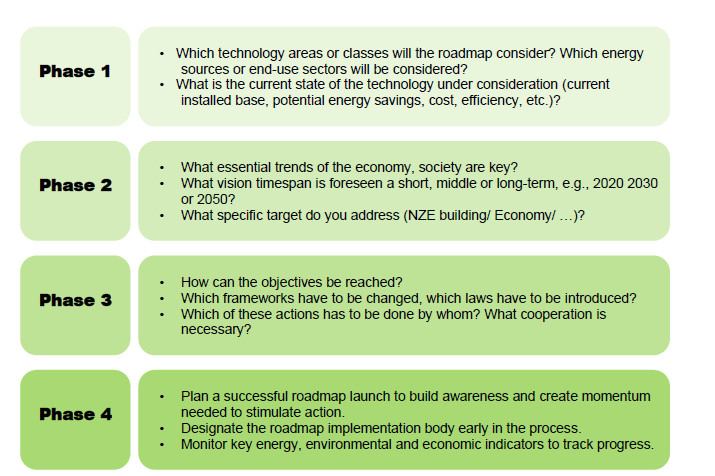Posted: February 3, 2025

The IEA SHC Task 65 on Solar Cooling for the Sunbelt Regions has built up a comprehensive knowhow base over the last four years. 16 reports and a number of conference papers are publicly available on the Task website (link to https://task65.iea-shc.org/publications). Task Manager Dr Uli Jakob has especially highlighted the work on solar cooling roadmaps. It resulted in a report that provides guidance on the development of roadmaps and policy recommendations to accelerate and spread the development of solar cooling technologies. You can download the report here: https://task65.iea-shc.org/Data/Sites/1/publications/IEA-SHC-Task65-DD3.pdf. Uli Jakob was interviewed for the most recent publication Solar Update (https://www.iea-shc.org/Data/Sites/1/publications/2024-12-Solar-Update-Newsletter.pdf), a pdf newsletter that gathers key results, publications and event reports from the IEA SHC Programme twice a year.
“The future markets for solar thermal cooling systems are in the Global South, where the demand for cooling is increasing rapidly due to the constantly growing population and extreme heat waves”, stated Jakob in the interview. “But very few efforts had been made to adapt and transfer knowledge about solar cooling to the Sunbelt countries such as those in Africa, the Middle East and Asia, most of which are dynamic emerging economies.”
The focus in terms of adaptations has been on the heat rejection systems for dry and hot or humid and hot climates and thus the operational safety of these systems and kits. In addition, using medium-temperature solar systems to operate two-stage absorption chillers is becoming increasingly popular to increase competitiveness against traditional compression chiller systems. You can also check the news article about the report titled Standardized Solar Cooling Kits”. https://task65.iea-shc.org/article?NewsID=544

Figure 1: Methodology for developing technology roadmaps according to IEA
Source: OECD/IEA 2014
Recommendations for future solar cooling roadmaps
Roadmaps and action plans are a useful tool and usually the first step on the national clean energy transition path. In the report Roadmaps of Solar Cooling in the Sunbelt Countries the authors first carried out a literature screening of all the existing roadmaps. It was found that there are two types of roadmap, those focussing on solar technology including cooling to a lesser extent (seven road maps were identified) and those purely focussing on cooling (eight documents found). The national cooling sector was assessed in the following markets: Bangladesh, Cambodia, Kenya, Rwanda, Panama, India, Barbados and Lebanon. Roadmaps for Uzbekistan, France and Austria also dug into solar technology applications and a number of institutions had published sub-regional studies.
In a second step, the roadmaps were analysed regarding various indicators. The focus here was on whether they capture the cooling demand, possibly even in relation to different sectors, whether they describe the technology development and generate an implementation plan.
The Task 65 author team recommends that future roadmaps on solar cooling technologies should take both cooling demand and solar cooling technology development into consideration. This is because roadmap drafting is most promising when interlinking solar cooling technologies and their potential field of application on a national scale, directly targeting the most fruitful operation.
The authors also advise using the Energy Technology Roadmaps Guide published in 2014 by the IEA (see figure 1). Based on the four phases developed in the IEA guide, previous solar cooling Task experts developed a series of key questions and recommendations for each phase, which has now been adapted by the task 65 team (see figure 2). They have listed and described twelve steps needed to create and implement a roadmap (page 21/22 of the Roadmap Report).
Further guidance from this team: Especially for those countries in the Global South which are experiencing economic development and financial growth, it is important to develop roadmaps and define a pathway at an early stage in order to direct the energy and economic development in the cooling sector in the right direction. Besides this, it says in the report that the integration of foreign experts seems promising if there is a lack of national stakeholders for roadmap development.

Figure 2: Key questions and recommendations for each phase when drafting a solar cooling roadmap.
Source: Report Guidelines for Raodmaps on solar cooling of Task 48 from 2014
Websites of organizations and publications mentioned in this news article: